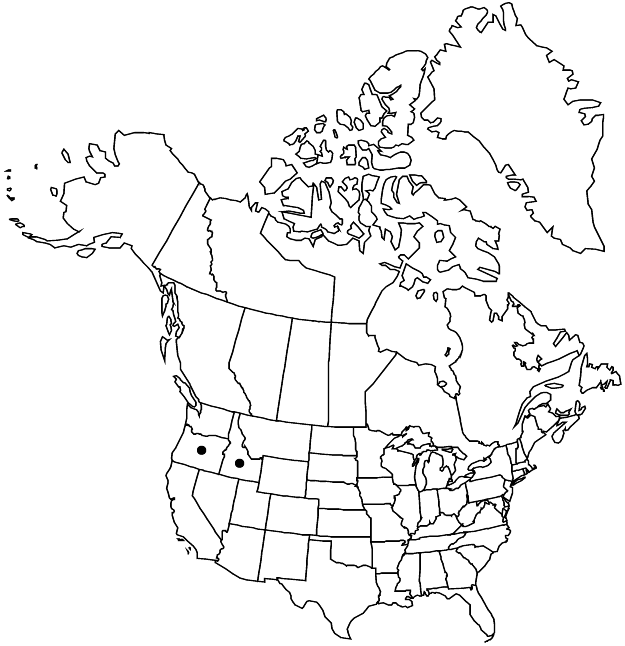Eriogonum scopulorum
Phytologia 23: 170. 1972.
Herbs, matted, scapose, 0.4–1 × 0.5–1.5(–2) dm, glandular-hairy, grayish. Stems matted, with persistent leaf bases, up to 1/5 height of plant; caudex stems matted; aerial flowering stems scapelike, erect, slender, solid, not fistulose, (0.3–)0.5–0.7 dm, glandular-hairy. Leaves basal, fasciculate in terminal tufts; petiole 0.2–0.4 cm, tomentose, glandular; blade oblanceolate to elliptic, (0.5–)0.6–0.9(–1) × 0.25–0.6 cm, densely white-tomentose and glandular on both surfaces or greenish adaxially, margins plane. Inflorescences capitate, 0.5–1.5 cm; branches absent; bracts 5–6, scalelike, triangular, 1.3–1.6 mm. Peduncles absent. Involucres 5–7 per cluster, turbinate-campanulate, 2.5–3 × (1.5–)2.5–3 mm, membranous, glabrous or glandular and sparsely floccose; teeth 5–6, erect, 1–1.5 mm. Flowers 2.5–3(–3.5) mm; perianth pale yellow, minutely glandular; tepals connate proximal 1/5, monomorphic, oblanceolate; stamens exserted, 3–4 mm; filaments pilose proximally. Achenes brown, 2–2.5 mm, glabrous.
Phenology: Flowering Jul–Aug.
Habitat: Rocky granitic outcrops, sagebrush communities, montane conifer woodlands
Elevation: 2400-2900 m
Discussion
Eriogonum scopulorum is known only from a few scattered locations in the Wallowa Mountains of Wallowa County, Oregon, and in Adams and Idaho counties, Idaho. While rare, and of concern to the U.S. Forest Service, it is not considered a “sensitive species,” given its remote location and lack of any immediate threat. The cliff wild buckwheat is worthy of cultivation as a rock garden plant.
Selected References
None.
